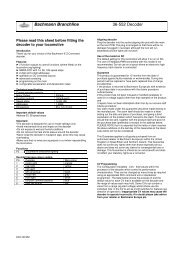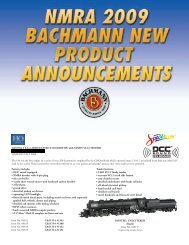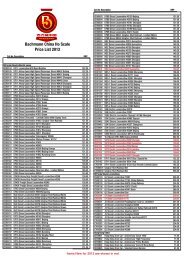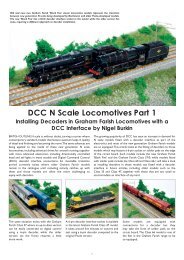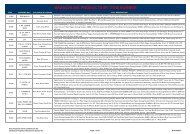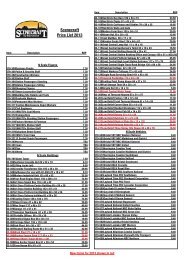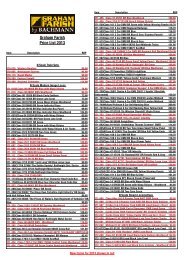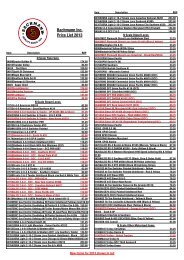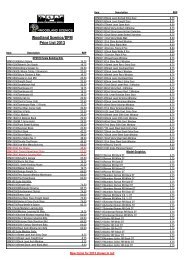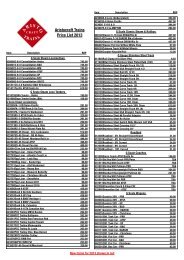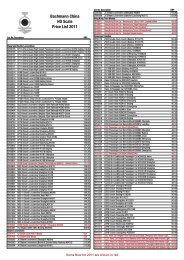Spectrum Steam Sound User Guide(1.4MB) - Bachmann
Spectrum Steam Sound User Guide(1.4MB) - Bachmann
Spectrum Steam Sound User Guide(1.4MB) - Bachmann
Create successful ePaper yourself
Turn your PDF publications into a flip-book with our unique Google optimized e-Paper software.
Programming the CVsBasics of ProgrammingWhat is a CV?CV stands for Configuration Variable, which is the industry-adopted termfor a decoder’s user-programmable memory locations. CVs allow you tocustomize individual decoder properties such as the address, momentum,throttle response, sound volume and much more. Once a CV has beenprogrammed, the setting will be permanently remembered even after thepower has been turned off. A CV can be modified as often as necessary bysimply reprogramming it with a new value.With the large number of CVs available, first inspection of the availableoptions may cause confusion and little panic! Relax. As you have alreadyseen the DSD has been shipped with all CVs pre-programmed so you canbegin using your locomotive immediately without having to worry about whatadjustments to make.The following paragraphs break the sound decoder’s CVs into varioussubsystems so it is only necessary to change a few CV’s at a time. As youbecome comfortable with it’s operation, move onto a new section and beginexploring the options and capabilities found there. For more technicallyinclined users, detailed information on any CV can be found in the TsunamiTechnical Reference.Bits and BytesOne of the most confusing aspects of programming a CV is figuring out whatall the different bits, bytes and x’s found in the various decoder manualsmean. The problem is compounded further by differences in each commandstation manufacturer’s user interface. For users unfamiliar with such terms, ashort math lesson (ugh!) is in order before proceeding:Each decoder CV stores a numeric value that can be represented in one ofthree forms:Decimal - This is the form everyone is familiar with and we use in our day-todaylives. Numbers are represented as a sequence of digits composed of thenumerals 0,1,2,3,4,5,6,7,8, and 9.Hexadecimal - Also referred to as simply “hex”, this is a more specializednumber representation that, in addition to 0 through 9, also uses thecharacters A-F. It has the advantage that a given decimal number can bemore compactly represented. For example, the decimal number 127 convertsto a simple 7F in hex (one less digit). This allows user interfaces with alimited number of digits (i.e., the LCD on your cab) to display a wider range ofnumbers.Binary - Binary numbers get their name from the fact they use only twodigits 0 and 1 called ‘bits’ and is the fundamental number system used by allcomputers including the ones found inside a digital decoder. Because thereOEM <strong>Steam</strong> <strong>Sound</strong> <strong>User</strong>’s <strong>Guide</strong> Page 5Return to Main <strong>User</strong>'s <strong>Guide</strong>Return to Table of Contents



